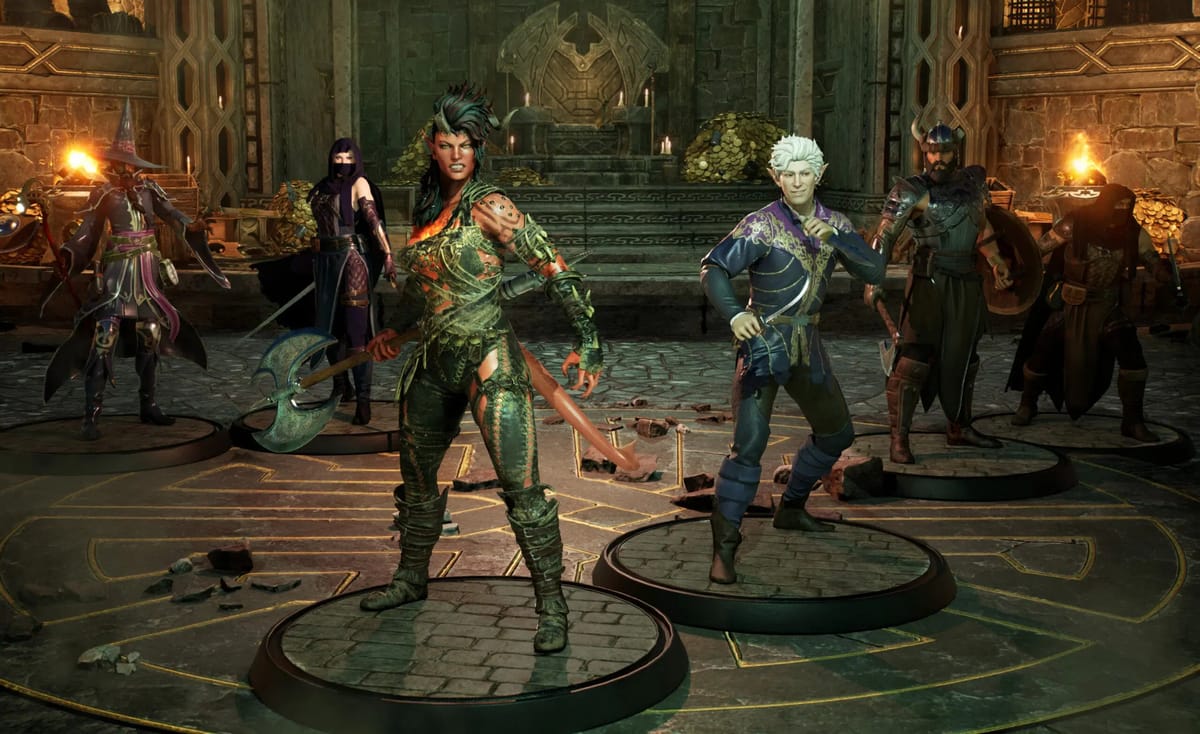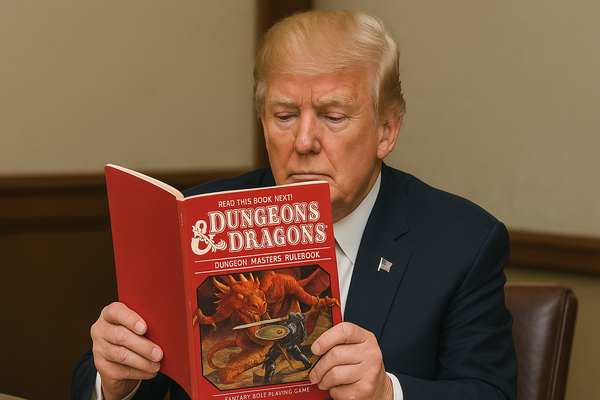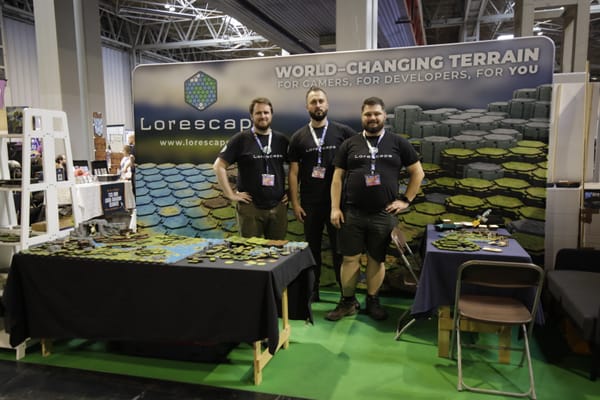The Future of Tabletop Roleplaying Games: Trends to Watch in 2025 and Beyond

Tabletop roleplaying games (TTRPGs) have experienced a massive resurgence in recent years, with new players, creators, and campaigns popping up all over the world. As the industry continues to grow, so do the trends that shape it. In this post, we’ll explore some of the key trends shaping the future of TTRPGs, from technological innovations to evolving player preferences.
The Integration of Technology: Digital Tools and Online Play
While tabletop roleplaying games have traditionally been a face-to-face experience, the rise of digital platforms has brought new possibilities for how games are played. With the growth of virtual tabletops (VTTs) like Roll20, Foundry VTT, and Fantasy Grounds, more and more players are turning to online play, especially post-pandemic.
- Augmented Reality (AR) and Virtual Reality (VR): As technology advances, AR and VR could become the next frontier for TTRPGs. Imagine playing in a virtual dungeon with fully immersive environments and 3D character models. While this technology is still in its infancy, it’s not far-fetched to believe that AR and VR could revolutionize the way we experience tabletop games.
- Companion Apps and Digital Dice: Many TTRPGs are already experimenting with companion apps to streamline gameplay. These apps can manage characters, rules, and combat mechanics, helping keep players engaged and allowing for a smoother game experience. Digital dice rolling apps have also become popular, especially for remote games.
- Remote Play Growth: With platforms like Discord and Zoom facilitating remote play, online communities for TTRPGs have blossomed. As more people embrace online play, expect more tools and features dedicated to enhancing remote gaming experiences, such as integrated video chats, character management, and in-game mechanics tracking.
Inclusive Games and Diverse Representation
As tabletop roleplaying games continue to grow, so does the demand for more diverse and inclusive content. Players want games that reflect a wider range of cultures, identities, and experiences. In response, creators are increasingly focused on developing inclusive game systems and stories that represent marginalized groups.
- Expanded Representation in Characters: TTRPGs are moving toward more inclusive character options, such as gender-neutral or non-binary choices, as well as representation for different ethnicities, sexual orientations, and abilities. It’s becoming more common for game creators to incorporate diverse characters into their settings and offer rules that make space for a variety of play styles.
- Culturally Rich Settings: More games are incorporating settings inspired by real-world cultures, historical events, and mythology. This shift is helping to provide a broader array of experiences for players and giving them the opportunity to explore worlds outside the traditional European fantasy mold.
- Social Impact and Sensitivity: TTRPG creators are increasingly mindful of the impact of the stories they tell. Game designers are exploring themes of social justice, equality, and inclusion, while also making sure that content is handled with care and respect. This shift is helping make TTRPGs more welcoming and accessible to a wider range of players.
Crowdfunding as the New Normal for Game Development
Crowdfunding platforms like Kickstarter and Indiegogo have revolutionized how tabletop roleplaying games are funded and brought to market. Now, more TTRPGs are being created through crowdfunding campaigns than ever before.
- Crowdfunding as a Launchpad: Crowdfunding isn’t just about raising funds—it’s also a way to build a community around your game before it even hits the shelves. Creators can engage with their backers during the campaign, receive feedback, and make adjustments based on the backer community’s input. This helps ensure that the final product aligns with player expectations.
- Kickstarter Success Stories: Games like Critical Role’s Campaign Setting and Tales from the Loop have proven that crowdfunding can be a highly effective way to fund a TTRPG. As the popularity of crowdfunding grows, expect to see more indie game designers take advantage of these platforms to launch their projects and find an audience.
- The Rise of Miniature Games: Crowdfunding is also supporting the creation of miniature games, with backers pledging for high-quality miniatures and custom-made models for their TTRPG campaigns. This trend is helping shape the future of TTRPGs, offering players an immersive experience with visually stunning figures for their tabletop adventures.
Narrative-Focused Roleplaying Games and Storytelling
The trend toward more narrative-driven roleplaying games is growing. While mechanics and dice rolls still play a major role, many new games focus on storytelling as the core experience.
- Story First, Mechanics Second: Many indie games are stepping away from traditional dice-based mechanics and focusing more on storytelling and character development. Games like Fiasco and Monster of the Week emphasize collaborative narrative creation and are designed to be played without extensive preparation or rules.
- GM-less Systems: Some of the most exciting innovations in the TTRPG world are games that do not require a Game Master (GM). These GM-less systems, such as The Quiet Year or Honey Heist, focus on collaborative storytelling where all players take an equal part in shaping the narrative. This allows for a more egalitarian and flexible experience.
- Narrative-Building Tools: With the rise of narrative-focused games, there’s also been an increase in tools that support storytelling. These can include plot generators, collaborative world-building systems, and character creation tools that help players dive deeper into their stories.
TTRPGs as a Social Experience
Tabletop roleplaying games have always been about social interaction, and as the industry continues to grow, the focus on social gaming is becoming more apparent.
- Accessible Play for All Ages: More games are being developed with accessibility in mind. Rules are becoming easier to understand, and the complexity of traditional TTRPGs is being streamlined to cater to a broader audience. Family-friendly TTRPGs are making it possible for players of all ages to enjoy the hobby together.
- Games for Non-Gamers: TTRPGs are not just for experienced gamers anymore. Newer games like No Thank You, Evil! and RPGs for Kids are designed to introduce non-gamers to roleplaying in a way that’s easy to understand, making it easier for new audiences to get involved.
- Streaming and Virtual Communities: The rise of TTRPG streams on platforms like Twitch and YouTube has created virtual communities where people come together to watch, learn, and discuss games. This has expanded the social aspect of TTRPGs, as players can share their experiences and connect with others globally.
Project Sigil: A Next-Generation TTRPG Innovation
As tabletop roleplaying games continue to evolve, Project Sigil is at the forefront of the industry's transformation, seamlessly integrating technology with traditional storytelling. Designed as a cutting-edge virtual tabletop (VTT) and storytelling platform, Project Sigil aims to revolutionize how players experience TTRPGs by offering AI-powered storytelling tools, immersive virtual environments, and a dynamic game management system. Unlike existing platforms, Project Sigil leverages procedural content generation, allowing Game Masters (GMs) and players to create unique worlds, characters, and encounters in real-time.
One of Project Sigil’s standout features is its AI-assisted world-building system, which enables GMs to quickly generate NPCs, quests, and settings that react dynamically to player choices. By incorporating machine learning and natural language processing, the system helps storytellers create richer narratives without being bogged down by extensive prep work. Additionally, the integration of augmented reality (AR) and virtual reality (VR) enhances immersion, allowing players to explore their worlds in ways never before possible. Whether viewed through a screen or in a fully immersive VR environment, Project Sigil is redefining the way TTRPGs are played.
Beyond its technological advancements, Project Sigil is also committed to inclusive and accessible gameplay. The platform supports customizable mechanics, diverse character representation, and built-in safety tools to ensure that all players can engage comfortably. With a built-in crowdfunding and community-driven expansion model, Project Sigil is positioned to become a game-changer in the TTRPG space, fostering a new era of interactive, AI-enhanced, and socially engaging tabletop experiences. As the industry continues to innovate, Project Sigil stands as a testament to the endless possibilities that lie ahead for TTRPGs.
Conclusion: The Bright Future of Tabletop RPGs
The future of tabletop roleplaying games is exciting, with technological advancements, a focus on inclusivity, and a growing emphasis on narrative-driven experiences. Crowdfunding continues to empower creators, while the social and digital aspects of TTRPGs allow for more players to connect and enjoy these games than ever before.
As the industry grows, we can expect even more innovative ideas, diverse perspectives, and captivating stories to shape the future of tabletop roleplaying. Whether you’re a seasoned veteran or a newcomer to the hobby, there’s never been a better time to dive into the world of TTRPGs.





